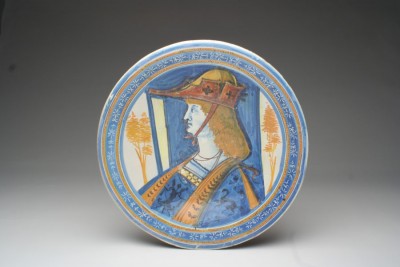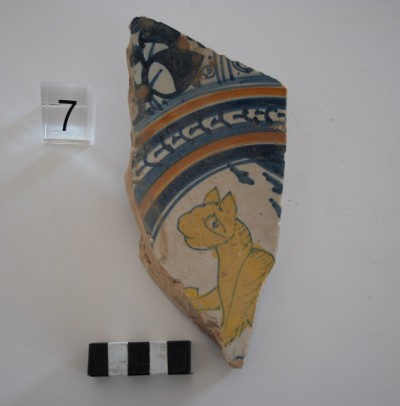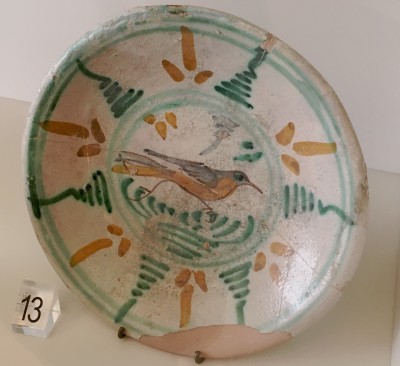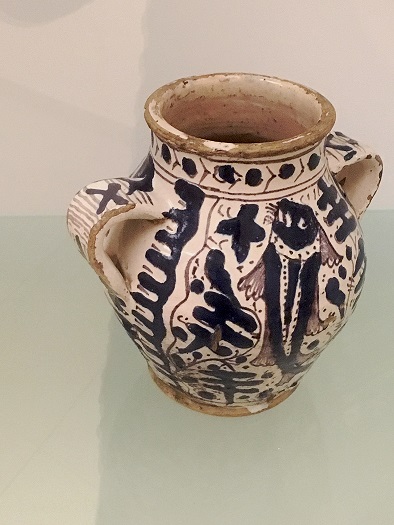
Roberta Di Febo, a technician at the ICAC’s Archaeometric Studies Unit, joins a project of the Museo Montelupo (Florence, Italy) on medieval and modern majolicas.
The study has begun with the analysis of a sample of small fragments of archaic majolica (green-brown), damaschino (blue), Spanish-Moorish imitation (yellow) and Montelupo red, which were found in different archaeological interventions carried out on last century in the historic centre of Montelupo (Florence) by the Archaeological Group of the same city.

The samples have been sent to a laboratory in Piombino (Tuscany) for the preparation of the thin sections, to which different microanalytical techniques will be applied: scanning electron microscopy, electronic microprobe and micro-Raman spectroscopy (see also this information on the blog of the Montelupo Museum: «Ceramica nel profondo»).
Di Febo goes again to the ALBA Synchrotron centre to study the crystalline microstructures of glazes
Next step in the process will be the X-ray analysis with synchrotron light, which will be carried out at the ALBA Synchrotron centre in Barcelona. Synchrotron X-ray diffraction (SR-XRD) is optimal for determining the crystalline microstructures of glazes, even with a very small amount of sample to analyse; and it allows determining the atomic structure of materials and studying their properties.
Di Febo previously collaborated with the ALBA Synchrotron centre, last 2019, in the development of a new experimental protocol to study the crystalline microstructures of glazes using thin sections (see the news on the ICAC website).

Data obtained through analyses will provide information on the decorative techniques used, the selection of pigments and the methods of applying glazes, as well as the decoration and firing conditions.
Besides, results will be compared with the information that can be found in ancient pottery recipe books, such as the famous Piccolpasso treatise or the collection of recipes by Dionigi Marmi, a potter from Montelupo.
Knowledge of the Montelupo majolicas is essential for the interpretation of the numerous post-classical archaeological sites, not only in Tuscany but also in national Italian and international contexts since materials of this typology have been found in different European areas, including Barcelona.

This intervention belongs to the research project «Characterization of the microcrystallites embedded in the glaze decorations of the Italian Majolica from Montelupo Fiorentino (Italy)», which aims to give relevance to archaeological studies on Montelupo Fiorentino ceramics, given that the Most of the existing studies have focused only on stylistic issues of decoration and morphology.
Montelupo majolica is considered a precious “fossil guide” to refine the dating of archaeological contexts from the 15th century to the early 19th century.
Colour is undoubtedly the most characteristic feature of Montelupo ceramic production, which had a dominant presence in the Tyrrhenian and Mediterranean markets during the Modern Age, and which was exported around the world: in England, France, Spain, Holland and even beyond the ocean, as show samples found in Cuba and Virginia.
Thanks to the multiple studies carried out on this colourful ceramic, it has been possible to know in deep the decorative and morphological development of Montelupo’s production from the early Middle Ages to the end of the 19th century. To the point that currently the Montelupo majolica is considered a precious “fossil guide” to refine the dating of archaeological contexts from the 15th century to the early 19th century.
Di Febo’s team wants now to expand previous studies on crystalline precipitates that form in ceramic decorations, through the characteristic colour features of Montelupo ceramics that have defined its extensive and rich production.

Roberta di Febo is a member of the ICAC’s Archaeometric Studies Unit, led by the researcher Anna Gutiérrez Garcia-Moreno.





